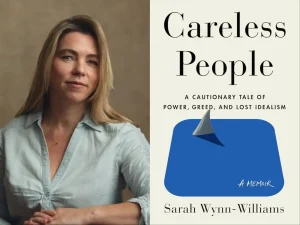Claire Weissman Wilks, a Toronto visual artist, exhibited her work in major galleries in Europe, Israel and Mexico. She was lauded by art critics in Italy, Serbia, Sweden, Mexico and Israel, but her one-woman shows did not garner the same level of recognition in Canada, her native country.
Wilks died of leukemia in 2017 at the age of 83, and now a group of art aficionados spearheaded by writer Barry Callaghan, Wilks’ common-law husband of 47 years, and art curator, Christian Bernard Singer, are determined to bring new attention to her artwork in Canada.
“What the Hand Sees,” a retrospective exhibition of Wilks’ work, is running at the Sheldon Rose Gallery until Oct. 13. On view are her monoprints from the “Out of the Cave” series along with sculpture and conte drawings.
READ: JAZZING UP THE TORONTO MUSIC SCENE
On Sept. 30 the gallery was also the venue for the launch of Claire Wilks What the Hand Sees (Exile Editions). This coffee-table, book, edited by Callaghan, showcases Wilks’ artwork. The book also encompasses biographical details of her life, and contributions about her work by other artists and literary figures.
More than 50 people gathered for the multifaceted launch. Novelist Anne Michaels interviewed Callaghan about Wilks, her art and their life together. Michaels has also written about Wilks’ art, as has poet, David Sobelman. He read from his book, Facets of Eros: The Drawings of Claire Wilks (Exile Editions).
The afternoon also included Janice Kulyk Keefer’s readings from We Left the Camp Singing: The Etty Hillesum Poems and Drawings (Exile Editions) . The book features Kulyk Keefer’s poetry along with drawings by Wilks. These works were inspired by The Interrupted Life: The Diaries of Etty Hillesum; The Intimate Journal of a Young Jewish Woman in Holland During the Holocaust Years, 1941-1943. Hillesum died in Auschwitz in 1943.
There was even live music. Sicilian-inspired music was performed by Juno-Award winning artist, Dominic Mancuso, one of Wilks’ favourite musicians.
Her work did not follow the abstract trajectory of the various contemporary art movements. Her focus was figurative with an emphasis on the human body and all its configurations.

Wilks was a master at depicting the body, whether it was the intricate detail of the naked and contorted human forms inspired by Hillesum’s writings or the stark emotion conveyed in the bold forms of the Out of the Cave monoprints.
Through various media – charcoal, tusche lithography, monoprints, clay and bronze – she was able to convey the human emotional experience from love and compassion to loneliness and pain.
She was also known for portraying the eroticism of the human body – male and female.
Wilks, grew up in a Jewish home, but her parents divorced. She contracted tuberculosis in her late teens and spent three years confined to a sanatorium. In 1952, when she was successfully treated with antibiotics and surgical removal of a rib and the infected part of her lung.
She had four children with her first husband, Sydney Weissman. When the couple divorced Wilks found a job at the CBC. She was working in the current affairs department in the early ‘70s when she met Callaghan, then a CBC producer.
He spoke about her 30 years of juggling two careers – current affairs and art. After a day at the CBC, Wilks would retreat to her studio at night and on weekends. Once she retired from the CBC she became a full-time artist.
In addition to Toronto, Ottawa and Calgary, Wilks also had solo exhibitions in New York, Jerusalem, Rome, Venice, Stockholm, Zagreb, and Mexico City.
The exhibition of her monoprints at the Fondazione Querini Stampalia in Venice, was a major career milestone, according to Callaghan. He likened the Fondazione to the Guggenheim in terms of the institution’s stature in Northern Italy.
He said Wilks was also the first international artist to be given a major exhibition at the inauguration of the Pinacotcea of the Centro des Artes in Monterrey, Mexico.
“The Mexican governor was there. The Canadian ambassador to Mexico was there,” Callaghan recalled. “I was so pleased. I was ecstatic. This was her moment. I just loved watching it.”
The Sheldon Rose Gallery (1710 Avenue Rd.) is open Tues. to Sat. from 11 a.m. to 5 p.m. and on Sundays from 1 to 5 p.m.







